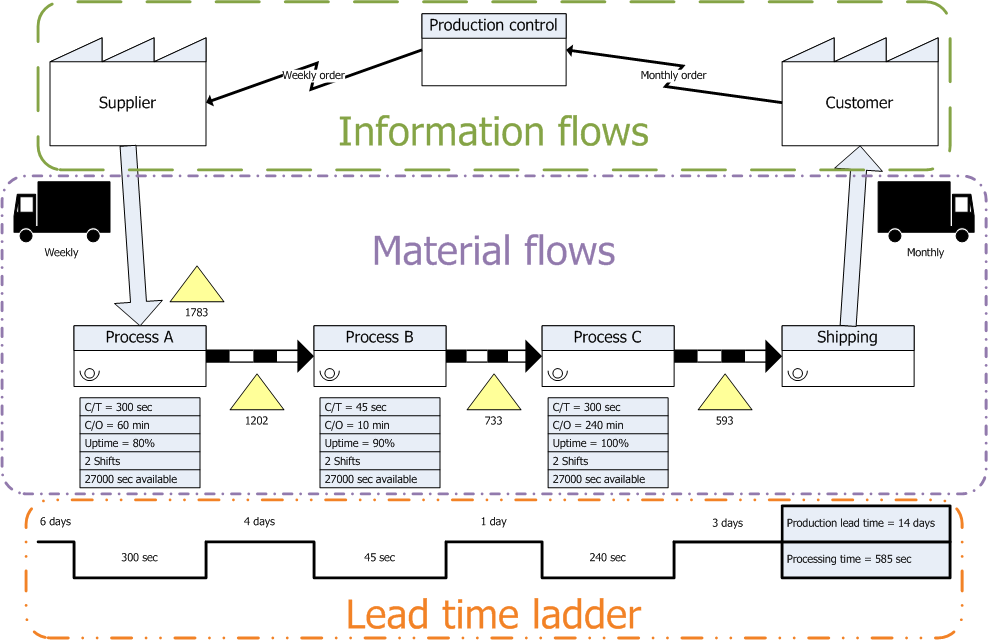There is a wide gap between the solopreneur who achieves whatever they put their mind to, and the one who struggles… and ultimately fails.
What is responsible for that gap? You could point to many reasons. Here’s a big one:
The successful solopreneur will make a choice now that will save them time later.
It’s easy to understand and implement basic productivity hacks. Prioritized task lists, organized systems, and a distraction-free workplace. Those only get you off the starting line. But it doesn’t take much discipline to make those choices. You can see the return right away. Basics won’t separate you in the long run.
Not having made the right time-saving choices for the future can doom you down the road, even if you see some initial growth. Success kills businesses all the time. Especially in the beginning, setting up the proper systems to save time is key to sustainable growth.
Here are time-saving choices you can make today that will pay big dividends tomorrow.



1. Involve Your Family
You are a solopreneur, which means you’re a dreamer. Entire organizations exist in your head. When you close your eyes, you can see whole universes – streams of money that feel just as real as they would sitting in your bank account.
Your family doesn’t see that. They see that you are out of ranch dressing and could you please get more from the store, but don’t allow your daydreams to lead you to the poppyseed dressing instead again because we’re making a taco salad tonight and poppyseed dressing doesn’t go well with salsa, DOES IT TODD?
→ Click Here to Launch Your Online Business with Shopify
(The above is a hypothetical situation, of course.)
Dressing mix-ups aside, involving your family early on has big benefits.
A while back, Wall Street Journal bestselling author and marketing guru Ryan Holiday wrote that the best life hack is a good spouse. However, when most solopreneurs hear they should involve their family in the dream, goosebumps ripple from their toenails to their ear holes.
Why the fear? Simply because the stakes are higher. One million “NOs” from strangers aren’t bad. But the risk of a single doubt from your significant other? That’s nightmare fuel. It feels like the whole relationship, not just your business, is on the line. –

As uncomfortable as it might be, telling your life partner the plan is the first step every solopreneur should take. This can save you infinite tense conversations down the line. In addition, you might also gain support in exactly the place you were afraid to be most vulnerable.
Author and speaker Jon Acuff puts it like this: “Marriage math is crazy. When two people are pushing in the same direction on a dream, 1 + 1 doesn’t equal 2. It equals approximately 19 million.”
The more assets you have in the home, the better your business life becomes.
2. Outsource Domestic Chores
Everyone knows to outsource tasks at work. That’s business 101. What is less common is applying similar logic to domestic chores.
Any time the word “outsourcing” crops up, I don’t think about work. Instead, I think about my first first flight. The 1,100 mile trip had taken only two hours. It felt like pure witchcraft.
I got the same feeling when, nearly a decade later, I paid someone else to mow my lawn for the first time. This was unthinkable last year because paid lawncare was for super rich and old people. I claimed to love the exercise and the sunshine.
Turns out I didn’t love it that much.
While my yard was magically mowing itself, I got to keep working on the business. Outsourcing the lawn immediately became a staple of our lives.
When you were a child, chores cost you nothing but time. Now, they likely cost you time that could spend growing the business AND money that could be made from doing so. Homeowners spend an average of 10 whole hours per week on domestic chores. Renting isn’t much better, as renters spend close to 8 hours per week.
How many of your hours disappear thanks to mundane but necessary chores?

That’s a real question. Start keeping count. Cooking. Cleaning. Laundry. Trash. Recycling. Yardwork. Driving. Those minutes add up quickly.
You don’t have to be Jeff Bezos in order to start hiring this stuff out. Go slow at first. Meal delivery services have overcome the early bumps of a new industry and can save you huge chunks of time. Cheap options like Everyplate and Dinnerly are priced lower than $5 per meal. Laundry services are available in most cities. Cleaning crews probably cost less than you think.
Still resistant? Go back to the office and do a breakeven analysis. Find out the hourly cost of a service. Then ask yourself if you could make that much money if given an extra hour.
Once you feel the benefits of this, you’ll wish you could hire someone to brush your teeth.
3. Learn the Lean Six Sigma Way
Put your scuba mask on. We’re going to dive deep for a minute.
Lean Six Sigma is a combination of two business methodologies: Lean, as popularized by Japanese carmaker Toyota after WWII, and also Six Sigma, which was developed by American engineers in the 1980s and 90s. Both of these are called “continuous improvement” practices. “Continuous improvement” is exactly what it sounds like.
People who are certified in Lean Six Sigma methodology are paid better and respected more in big corporations. Why? Because they continuously improve the business lines. Sometimes this means implementing a new process, and other times it involves removing waste. In other words, these people are either making money for the business or saving it, constantly.
Still with me? Those were some thick paragraphs.
Lean Sigma methodology often takes weeks worth of training to complete. You would stare and study charts like this for days at a time:

Scary, right?
Luckily, you don’t have to go through the agonizing training that will get you Lean Six Sigma certified in order to benefit from the practice. Nor is it necessary to learn to read or write value stream maps like the one pictured above.
No, instead, simply take one day out of each month and ask this question: “Where am I wasting the most time in my business?” Pick the process you do most often. Then, literally list out each task involved.
For example: In order to write one blog post, I must:
- Come up with an idea
- Research existing articles on the topic
- Write a first draft
- Edit the first draft for unnecessary stories or points
- Write a second draft
- Edit the second draft for sloppy phrasing and punctuation
- Write a third draft
- Come up with a headline, and subhead if necessary
- Find a feature image
- Find any supporting images that can be added to the body
Then, ask these two question about each step
- Should I be doing this at all?
- If so, can it be done faster?
The results of those questions, even without further prompting, will lead you a long way. However, if you’re looking for more specifics, take a further look at the seven wastes as identified by Lean Six Sigma.
4. Have a Team of Experts Readily Available
This is NOT about outsourcing tasks. It’s about having an army of consulting experts ready to go.
Accounting. Legal. Taxes. Insurance. Real Estate. The best case scenario is to have an expert in each of these topics in your speed dial. This gets expensive if all of these folks are billing you. Your best choice might be to network with all kinds of people, and not just ones who are business owners like you.
Generalists see the world in a different way, but specialists are who make real the dreams of the solopreneur. Assuming you can do any of this by yourself will either cost you hours of research, hundreds of dollars in fees, or – most likely – both.
Do yourself a favor and have one of each of these people in your back pocket.
A Final Thought
The solopreneur has selected a life with difficult choices. The tips here are easy in theory, but more difficult to actually do. However, it is often the most difficult actions that are most worth taking.
Money will be made and lost.
People enter and exit your life.
Businesses live and then they die.
Time only goes one way: out.
Each grain of sand that falls down the metaphorical hourglass of your life is gone forever.
Use them wisely.



Author Bio
Todd Brison is a Bestselling author of the books The Creative’s Curse and The Unstoppable Creative. As seen on TIME, Inc., CBNC, and Apple News. He spends his spare time with his wife Kate, and his spoiled rotten French bulldog Francis.



